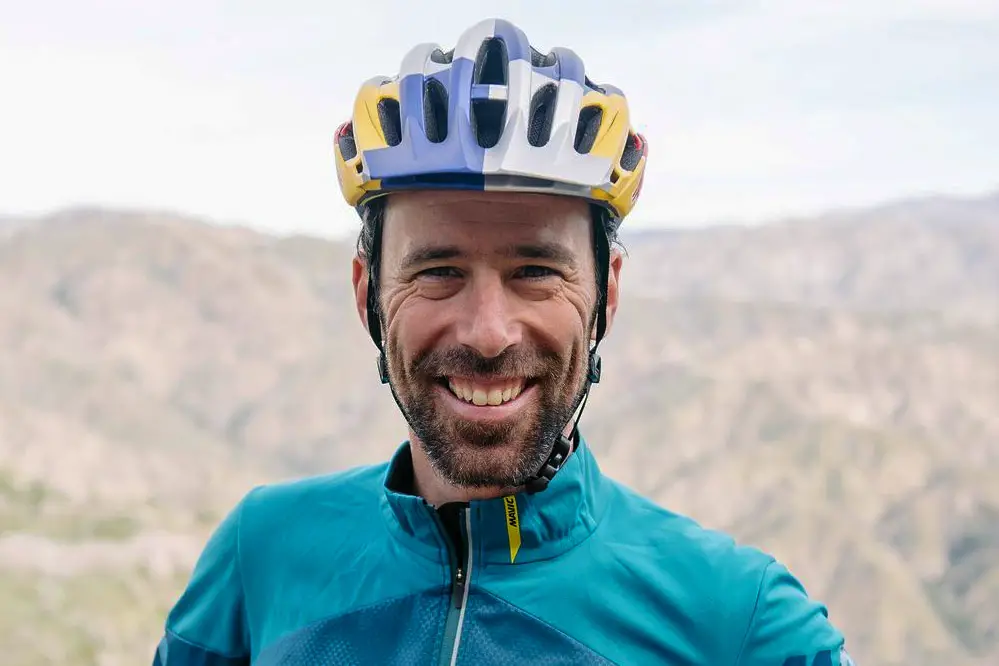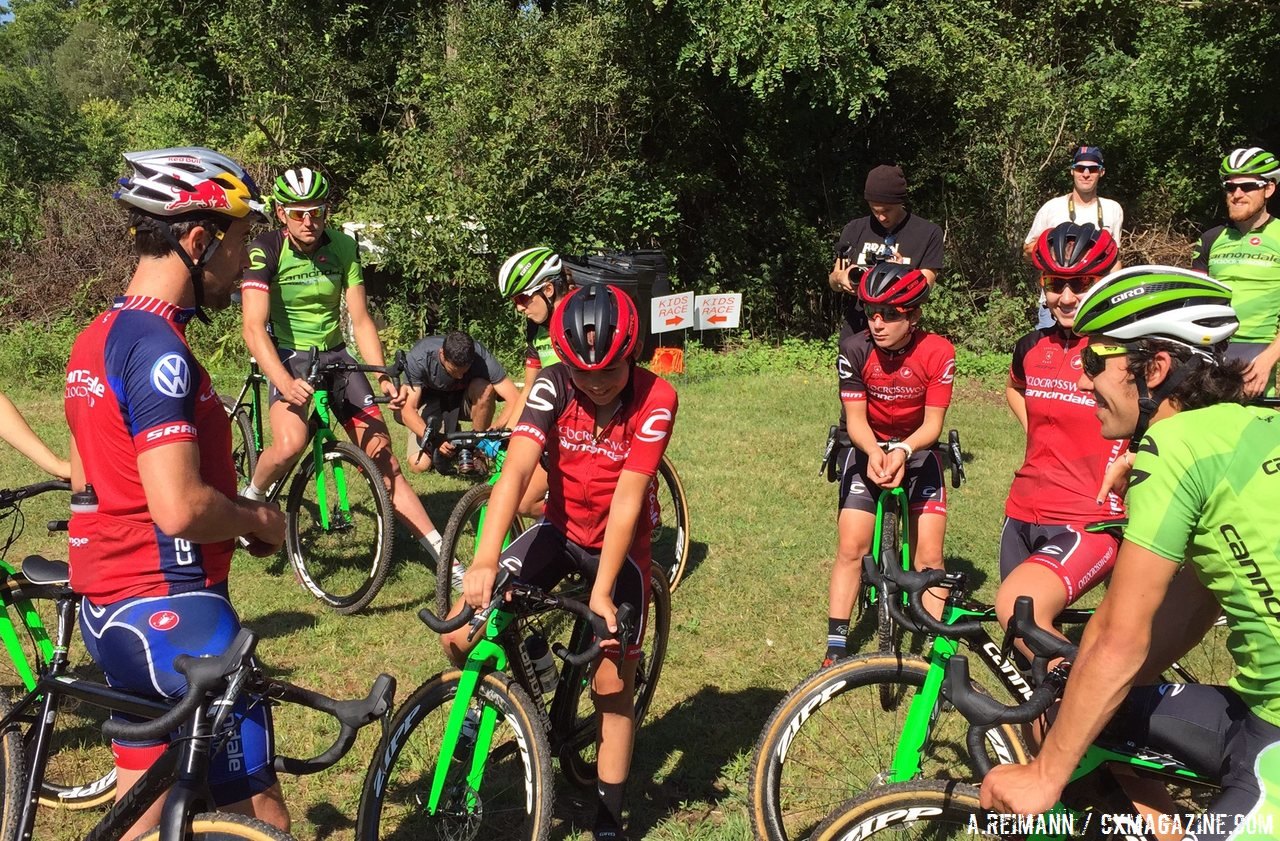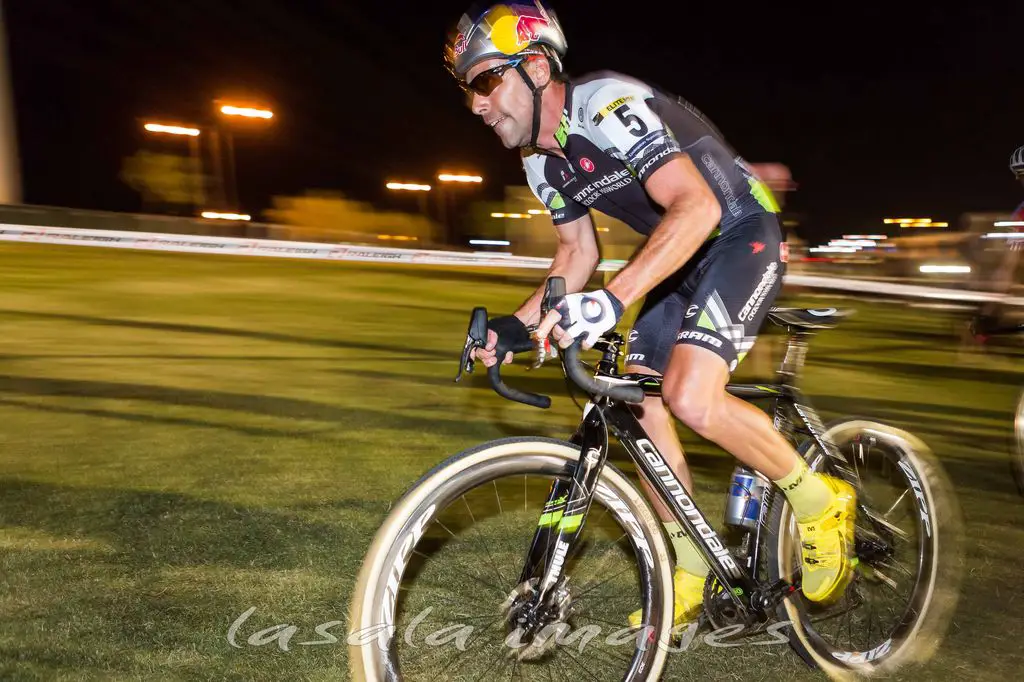Earlier this summer, USA Cycling announced that it hired Tim Johnson as the new Development Director for the USA Cycling Foundation.
The USAC Foundation is tasked with raising money and working with sponsors to fund USA Cycling’s activities. Johnson brings over two decades of experience riding and racing to the position as well as a knack for working with sponsors, as evidenced by his partnerships with Red Bull, Cannondale, Lululemon and Mavic that have continued even after he retired from professional racing in 2015.
We reached out to Johnson to ask him more about the position, what he hopes to accomplish and his thoughts on the state of cyclocross in the U.S. Of course, we also asked him if Tim Johnson, Masters racer, will be a thing in the future.

Tim Johnson continues his involvement with cycling as the Development Director for the USA Cycling Foundation. photo: Cannondale
Interview with Tim Johnson, USA Cycling Foundation Development Director
Cyclocross Magazine: How did you land your spot with USA Cycling’s Foundation?
Tim Johnson: I received an email from Derek Bouchard-Hall, CEO and President of USA Cycling, this spring suggesting that I take a look at the job listing on their website. He thought I might be a good fit for the position. I was in the middle of a program at Tuck School of Business called “Next Step” for former elite athletes and military at the time so the timing was spot-on. We were all talking about potential jobs, career changes and taking interviews.
I was willing to interview, but only felt truly convinced that it was the right move after speaking in greater detail with Derek and hearing his thoughts on the future of USA Cycling and its role in the ways people enjoy riding bikes.
CXM: Can you explain a bit about what the position entails?
TJ: My work is centered around bringing in new donors to the Foundation. We have so many reasons for people to be interested in our sport, whether it’s road, mountain biking, track or cyclocross. We also support BMX as they represent the USA in Olympics and World Championships. I have a real passion for riding bikes of all types myself and will be asking generous people to get more involved with our athletes.
CXM: Besides raising money, what are you hoping to accomplish with the position?
TJ: One of the main points that Derek made in our interview process was that he felt my contribution to USAC wouldn’t just be within the confines of the role. As someone who’s held a racing license for two decades and has also participated in events that have nothing to do with competition, I understand that racing is just one of the ways people ride.
Just because you have someone “only” riding to and from work as a commuter or just because another might only ride 10 times in a year, that doesn’t make them any less important to our future. Not enough has been done to welcome new folks to our world. Cycling has enough unseen barriers and secret handshakes to be learned.
CXM: When we talked to Ryan Trebon and his US Cup-CX efforts, he said he was trying to find sponsors outside the bike industry. What do you think the best opportunities for non-endemic sponsors are? What role can you play in this effort?
TJ: Ryan has called me multiple times during his searches to ask for help, ideas or to bend my ear. Non-endemic sponsorship of events and athletes is a necessity while the industry faces challenge after challenge. That said, marketing itself has changed a great deal in the time that I’ve been aware of its different facets and it’s not a static logo placement or even matching uniforms on 25 riders that will draw out the big bucks.
We have one of the most dynamic types of sports out there and we need to be able to tell that story many different ways in order to have eyeballs on us. I worked really hard to get the non-endemics that supported me, like VW, Red Bull and Lululemon. The goalposts change every six months though; it’s hard work.
CXM: What are some of the priorities you think USAC funding should be directed towards?
TJ: In terms of cyclocross? I will have a chance to voice an opinion but the decision isn’t mine at all. I’d love to see a broader outreach made for young athletes, not just Juniors that have an interest and motivation to race cyclocross. Talent ID camps are one way of doing that and I’m excited to see that we will have a few cyclocross-specific camps this season.
Another place for funding to be made is expanding the overall cyclocross program itself. I paid—okay my friends and family paid—for my first Worlds trip in 1996, and I’m pretty sure that I would have had to pay in 2015 if I’d been able to petition for the team. That’s not counting the fact that I was a relatively late bloomer as a U23, only placing 56th and 52nd (1996 Paris and 1997 Munich) before finishing 10th in Denmark in 1998 and 3rd in Poprad in 1999.
I petitioned when not National Champion and I’m sure the selection committee at the time, hadn’t exactly been to many races checking on who was fast and why. As a sport, we are rich in passionate people willing to work for change, but poor in the funds to properly implement strategies to really push our athletes or the sport forward.
CXM: It seems like we’re always talking about cultivating elite athletes versus growing the sport and know you have strong opinions on this. What are we doing well, and what needs changing? How do you think we can do both successfully? Are you able to influence this?
TJ: It’s so hard to distill my thoughts as an answer to what amounts to the toughest question around our sport, but the answer is easy: both. I have always been in tune with the need to grow the sport simply because I started while it was only regionally known and done by a very small subset of folks. We would have 100 people at a local cyclocross race, which was actually considered a “hotbed” at the time. We also had American riders racing in Europe at the World Championships each year, so in that way, we had both a grassroots and an elite presence.
The more we grew the grassroots—going to 300-500 riders at an event let’s say — to multiple events across the country on the same day with 500-700 riders, then we had more chances of faster, more talented riders racing on the world stage.
I believe that unless we have a healthy participatory-based sport that harnesses local passion and enthusiasm for cyclocross, then we’ll never have the best riders racing on the elite level. Athletes will always want to push higher up the ladder of a sport and we need to take on the attitude that we give them the opportunity, get them to the races on time and let them show their stuff.
CXM: You mentioned on social media you are a bit partial toward cyclocross. How do you think USAC can help keep ’cross athletes in the sport?
TJ: Watching the Tour this past month made it really clear. A talented athlete that comes through a sport like cyclocross will likely be a lifelong cyclist. I say that in comparison to a young, talented rider that comes through a more focused discipline like road racing, where you have scores of riders peeling off each year due to the demands of life, schooling, work or just plain burnout.
I see someone like Sagan or Alaphillipe and just think, they probably spent a couple of hours covered in mud on the day that their teammates were worried about eating too much or working up the mental energy to ride the rollers for three hours and then suffering the consequences. No discipline of cycling is lesser than another and cyclocross does a good job of incubating and providing a network of support that allows them to be successful later on.
CXM: The Olympics are king when it comes to USAC funding. How can cyclocross grow and thrive in that funding environment?
TJ: I am motivated to work hard and find new funding sources because of that construct. The Olympics are a huge focus and rightly so. USA Cycling is charged with fielding the best athletes to represent our country at the Games and it takes quite a bit of resources to do that. I would love to build up funding for cyclocross in a way that allows an athlete to see the possibility of representing their country in cycling (if they choose to do that), even if it’s not in “our discipline.”
The news of Emma White moving to the track and joining our incredibly successful women’s track program was great. She’s still “one of us” and will do her best in trying to win a medal. I don’t look at her leaving as a failure of ’cross at all, it’s the opposite actually.
CXM: What do you think DBH has done well in his term? What hasn’t gone so well?
TJ: He’s motivating people to be their best. I was excited to spend more time with him and build on my original impressions of him, besides just trying to hold his wheel back in the day! He’s a focused, driven and kind manager from what I’ve seen so far. He comes at the job with a variety of personal experiences in sport and business, but he’s also coming at it from someone that would like to get out and participate and that helps to shape his approach, I think.
His honesty when standing up in front of the athlete committees is welcomed and necessary. There are some changes coming soon that I think will help to solidify that narrative of positive change and to build a future for the sport.
CXM: Shorter, less time-intensive disciplines like BMX and cyclocross have a history of developing great Junior athletes that go on to other disciplines like road and mountain. You followed this path, and then came back to cyclocross. Many of us, ourselves included, are guilty of thinking only within a world of one discipline. But we’re curious what you think about the potential for USA Cycling to grow bike racing in general through introducing more youth to cyclocross.
TJ: Cyclocross is bite-sized and can be run in places where a traditional road race or mountain bike race would be impossible. For promoters, it’s relatively inexpensive and easy to jump into and fairly safe. So yes, there is great opportunity for youth-focused growth. Multi-discipline thought is a constant for me.

Tim Johnson took an active role with his Cannondale p/b CyclocrossWorld team walking the younger riders through skills and drills. © Andrew Reimann / Cyclocross Magazine
CXM: You’ve kept busy over the years with affiliations with companies such as Cannondale, Red Bull, Lululemon and Mavic, with your new role, will you continue those involvements? What else keeps you busy and pays the bills?
TJ: My work at USA Cycling is the priority now. Thankfully the relationships that I fostered with those brands allowed me to continue to ride and inspire others to get out there. Cannondale, Mavic, Lululemon and Red Bull are all companies that mean a lot to me. It’s digging in and working on R&D projects to launching new lines to sitting with dealers and customers that create deep value. Work like that is what allows me to provide help when asked and keeps me involved in what’s happening on the ground.
I also have consulted with Superpedestrian and their Copenhagen Wheel recently and my longtime friends PeopleForBikes remain an important lens of how I view bikes in general. We also started the TJ Wachusett Fondo to benefit MassBike, my state’s bicycle advocacy organization and will hopefully see that grow. Jeremy Powers and Ted King both were great to come out and ride with us. If only Jeremy hadn’t crossed more than a decade of living in Massachusetts, I could probably keep giving him a hard time about being from Connecticut, but the event is something that will continue far into the future, I hope.
CXM: Will we ever see you race a Nationals as a Master?
TJ: I’ve raced enough, I think! Mountain biking to cyclocross to road and a few years of doing them all at the same time. When I line up for a race now, I’m not “racing” and I don’t miss it. I love to challenge myself and I love to push others, but at this point I’m pretty A-OK with riding, chatting and only turning it up once in a while. Of course, I do also love to make my friends suffer, so there’s that …
CXM: Thanks for your time. Looking forward to seeing how your work with USA Cycling pays off for the sport.
TJ: Thank you.



























